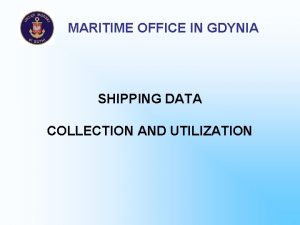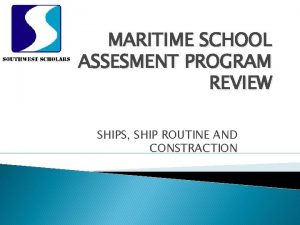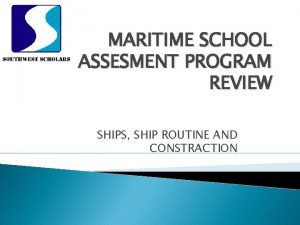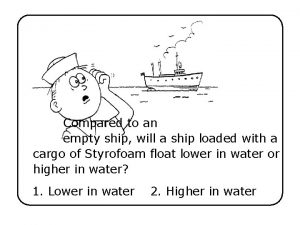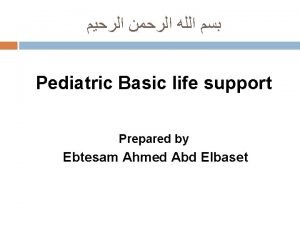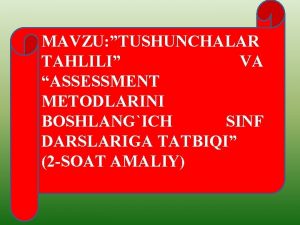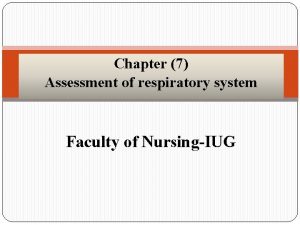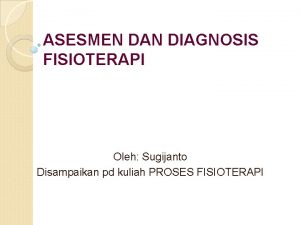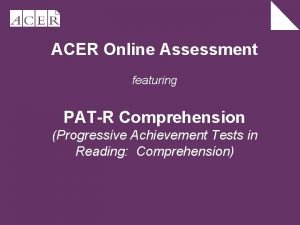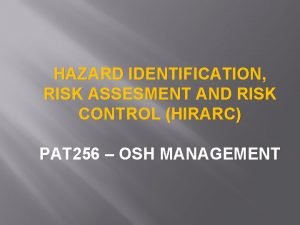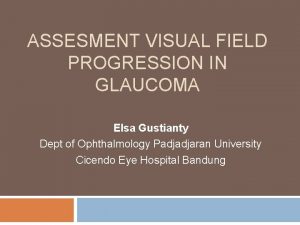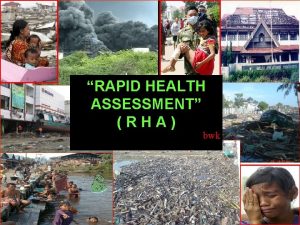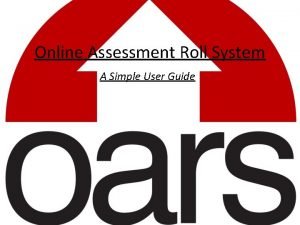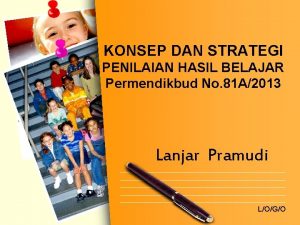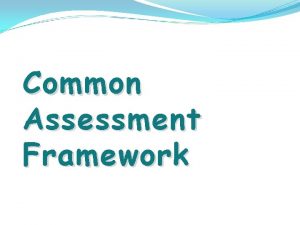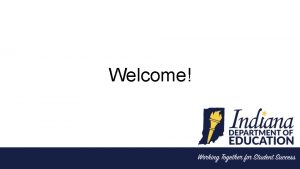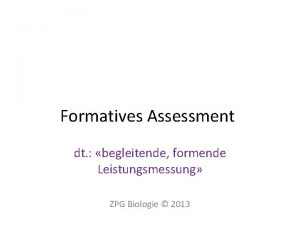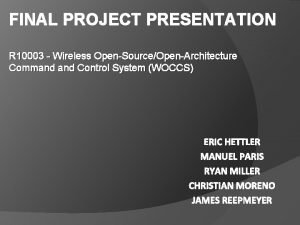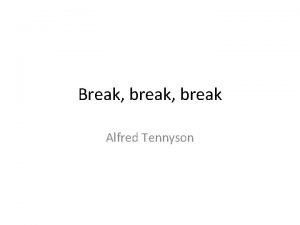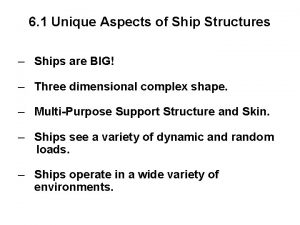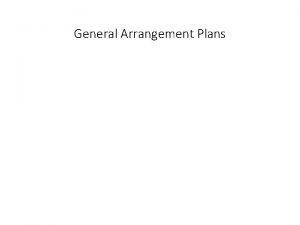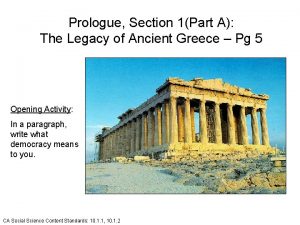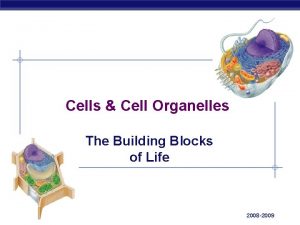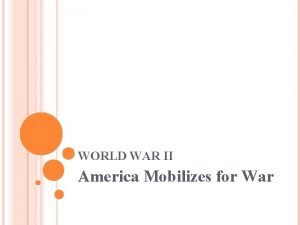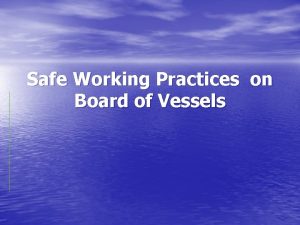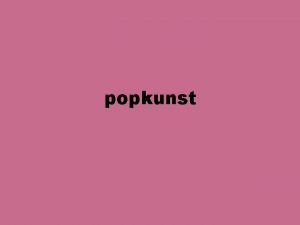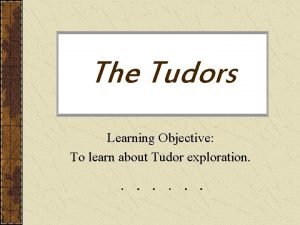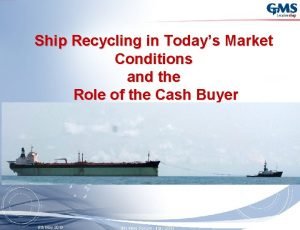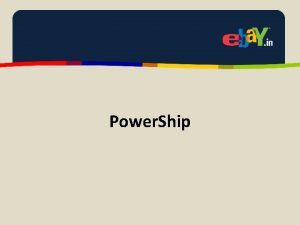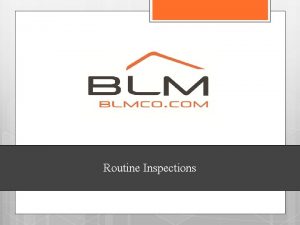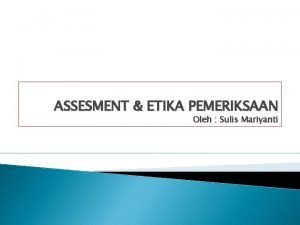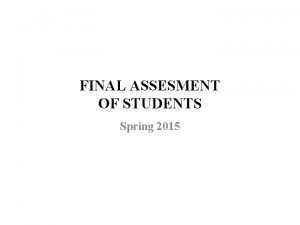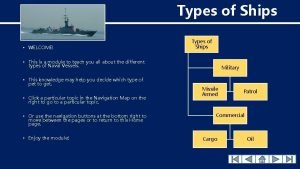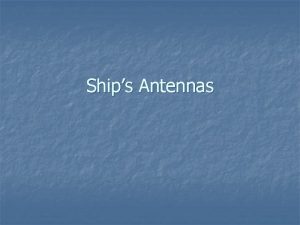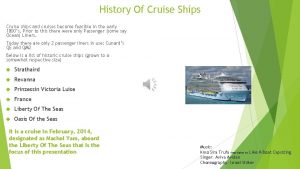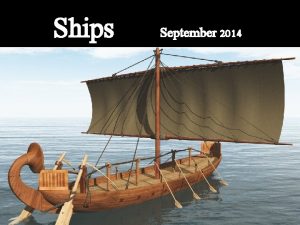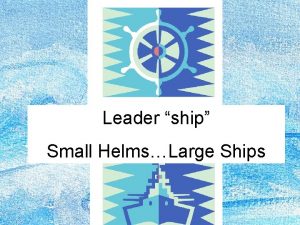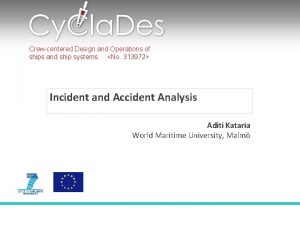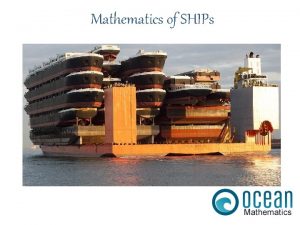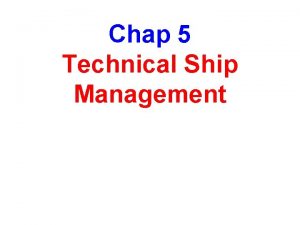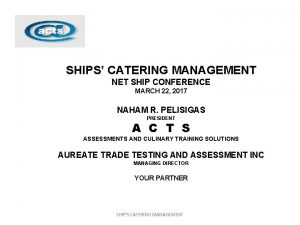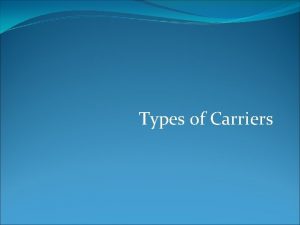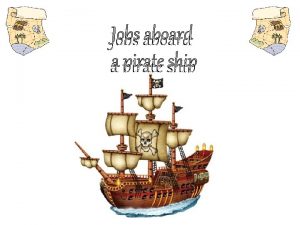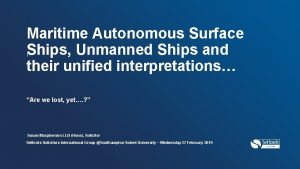MARITIME SCHOOL ASSESMENT PROGRAM REVIEW SHIPS SHIP ROUTINE



































- Slides: 35

MARITIME SCHOOL ASSESMENT PROGRAM REVIEW SHIPS, SHIP ROUTINE AND CONSTRACTION

1. The pillar shape that gives the greatest strength for the least weight is the _______. A. circular type pillar B. octagonal pillar C. “T” beam D. “H” beam

TRANSVERSE FRAMING SYSTEM

2. A strongback refers to _______: A. spanner stay B. deep beam C. centerline vertical bulkhead D. bar securing a cargo port

3. Shell plating that has curvature in two directions and must be heated and hammered to shape over a specially prepared forms is called ______. A. compound plate B. flat plate C. furnace plate D. rolled plate

4. Bilge keels are more effective at dampening rolls as the: A. pitching increases B. list increases C. rolling increases D. draft increases

5. A “contraguide” is a type of _____. A. bow thruster B. cargo gear C. steering gear D. rudder

6. What is a cofferdam? A. Any deck below the main deck and above the lowest deck B. A member that gives fore and aft strength C. Made by placing two bulkheads a few feet apart D. A heavy fore and aft beam under the deck


7. A device inserted into a container corner fitting that provide alignment and shear restraint in a stack of containers. A. Linkage plate B. Buttress C. Container stack D. Stacking cone

8. The joint formed when two steel plates are placed end to end. A. bevel B. butt C. seam D. bond

9. A ship which has no superstructure on the freeboard deck is called ____. A. flush deck ship B. bridgeless barge C. barge D. flat deck ship

10. Displacement refers to the _____. A. cubic capacity of the vessel B. deadweight carrying capacity of the vessel C. gross tonnage of the vessel D. number of long tons of water displaced by a vessel when afloat

11. The term strake is used in reference to: A. rudder mounting B. vessel framing C. hull plating D. anchor gear

12. It is the deck to which all main and transverse watertight bulkheads are carried. A. weather deck B. spar deck C. bulkhead deck D. cofferdam

13. Which arrangement of shell plating is used most in modern shipbuilding? A. Clinker B. Flush C. In-and-Out D. Joggled

14. A large basin cut into the shore, closed off by a caisson, and used for drydocking of ships. A. slipway B. ground warp C. graving dock D. caisson dock


15. This plan shows the general outline of the ship, contour of the stem and stern, any sheer of the decks, the deck position and all waterlines in a longitudinal side elevations. A. Profile or Sheer plan B. Body plan C. Half-Breadth plan D. Expansion plan

16. What term indicates that the dimension is measured from the inner face of the shell or deck plating? A. Register B. Moulded C. Tonnage D. Effective

17. Camber in a ship is usually measured in: A. feet per feet of breadth B. feet per feet of length C. inches per feet of breadth D. inches per feet of length

CAMBER + Arched form of a deck of beam to shed the water.

18. Which cargo plan would you refer to show the ship’s profile and uses block spaces with the name of each commodity carried? A. Block stowage plan B. Commodity stowage plan C. Profile plan D. Deck plan

19. Which scale shows varying drafts and number of tons required to submerge each centimeter of the various drafts? A. Displacement scale B. Loading scale C. Draft scale D. Deadweight scale

20. Which plan would you refer to locate the master’s cabin? A. Accommodation plan B. General arrangement plan C. Cabin plan D. Capacity plan

21. What s the ship’s broad profile which gives all data relating to the capacity of the cargo spaces, tanks, bunkers, storerooms and location of the center of gravity of each? A. Body plan B. Stowage plan C. Capacity plan D. Expansion plan

22. What is the primary causes of shipboard fractures? A. Heavy weather B. Notches and notch-sensitive steel C. Low temperature D. Usually high bending moments

23. The strictest loadline regulations apply to: A. gas carrier B. bulk carrier C. passenger ships D. tankers

24. It is the athwartship tank used for the tank stabilizer or anti-rolling tank. A. wing tank B. centerline bottom tank C. flume D. fin tank

25. The term “scantlings” refers to the ___. A. draft of a vessel B. measurement of structural members C. requirements for ship’s gear D. placement of a vessel’s loadline

26. A “chock” is a _____. A. deck fitting used to secure mooring lines B. deck fitting used as a fairlead C. sharp block of wood used to support hygroscopic cargo D. smoke pipe for the galley stove

27. The function of the freeing ports on a vessel with solid bulwark is to: A. prevent stress concentration in the bulwark B. permit easy jettison of deck cargo in an emergency C. provide openings through the bulwarks for mooring lines. A D. allow water shipped on deck to flow off rapidly

28. A fitting, used to secure line or wire rope, consisting of a single body and two protruding horns is called a _____. A. bitts B. bollard C. capstan D. cleat

29. The number of millimeters by which the mean draft changes when a ship passes from salt water to fresh water or viceversa. A. fresh water allowance B. salt water allowance C. free board allowance D. density allowance

30. The function of a chock on a vessel with a solid bulwark is to ______. A. allow water shipped on deck to flow off rapidly B. permit easy jettison of each cargo in an emergency C. prevent stress concentration in the bulwark D. provide openings through the bulwarks for mooring lines
 Maritime office in gdynia
Maritime office in gdynia Ship routine
Ship routine Ship routine
Ship routine A boat full of scrap iron floats
A boat full of scrap iron floats Ebtesam ahmed
Ebtesam ahmed Sample brief lesson plan
Sample brief lesson plan Assessment nima
Assessment nima Information technology assessment
Information technology assessment Chapter 7 assesment
Chapter 7 assesment Diagnosis fisioterapi
Diagnosis fisioterapi Oars acer
Oars acer Hirarc risk matrix table
Hirarc risk matrix table Essensial assesment
Essensial assesment Contoh rha bencana
Contoh rha bencana Informative assessments
Informative assessments Assesment roll
Assesment roll Strategi penilaian hasil belajar
Strategi penilaian hasil belajar Caf model
Caf model Indiana secure browser
Indiana secure browser Zpg biologie
Zpg biologie Wireless assesment
Wireless assesment Ecological risk assesment
Ecological risk assesment Directly ahead of the ships bow in line of the centerline.
Directly ahead of the ships bow in line of the centerline. Brake brake brake poem
Brake brake brake poem Elements of ships structure
Elements of ships structure General arrangement plan ship
General arrangement plan ship The turbine rotor of a ship has a mass of 3500kg
The turbine rotor of a ship has a mass of 3500kg Xerxes bridge of ships
Xerxes bridge of ships Ribosome factory part or worker
Ribosome factory part or worker How many liberty ships were built
How many liberty ships were built Safe working practices on board ships
Safe working practices on board ships Claes oldenburg
Claes oldenburg Famous tudor explorers
Famous tudor explorers Cash buyer of ships for recycling
Cash buyer of ships for recycling What is the smallest living unit in all organisms?
What is the smallest living unit in all organisms? Cilia analogy
Cilia analogy
